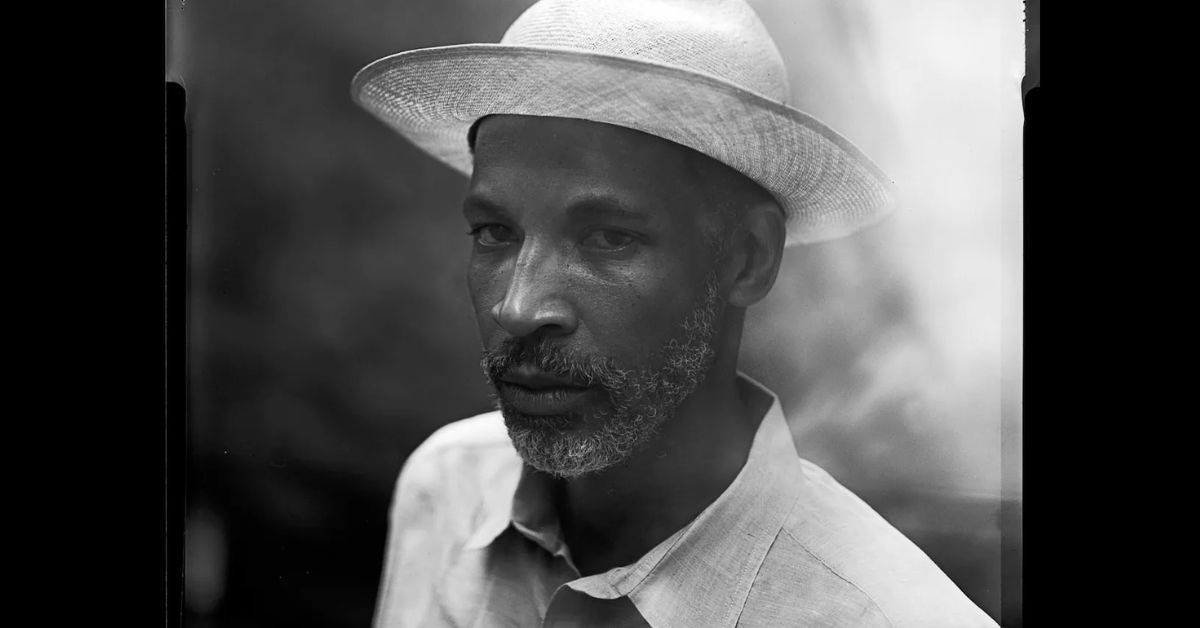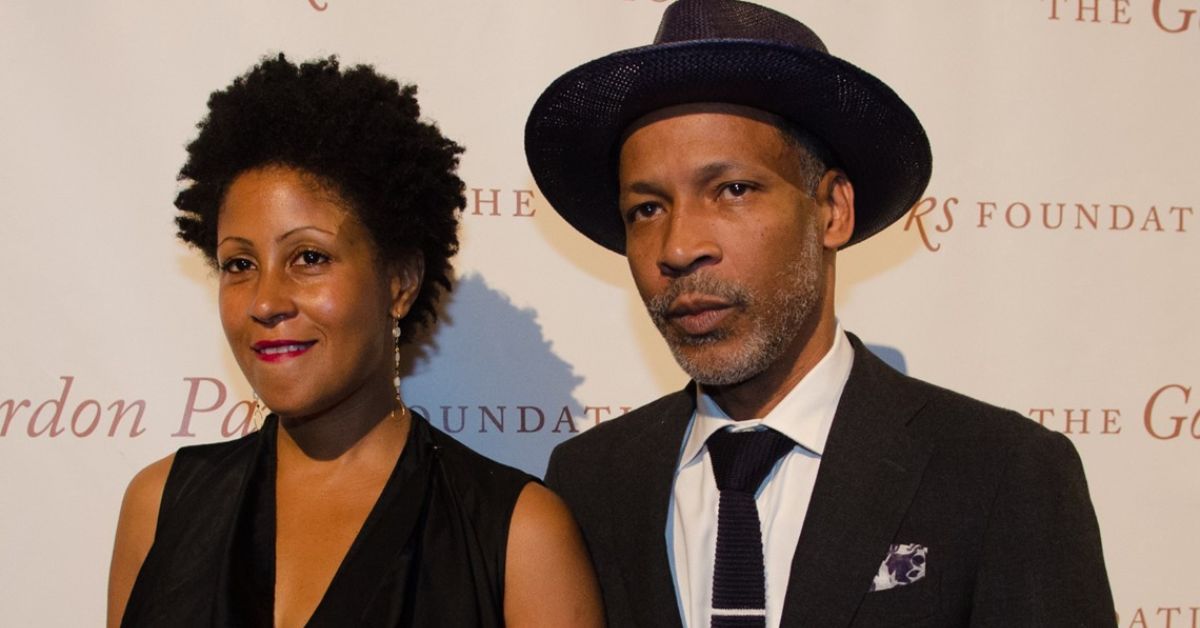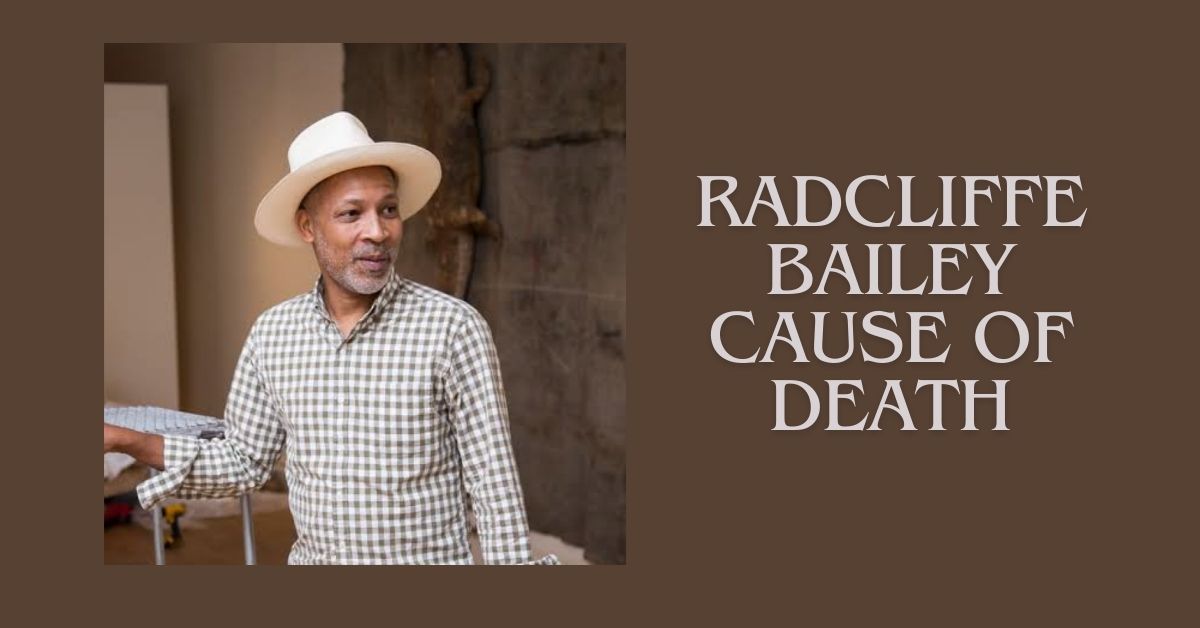The art world says goodbye to Radcliffe Bailey, a Georgia-based artist whose breakthrough collage paintings and sculptural works brought the complexity of personal history and the greater Black experience to life. Bailey, who died on November 14, 2023, at the age of 54, made an indelible imprint on the art world by weaving narratives that crossed time and cultural borders.
Radcliffe Bailey’s Cause of Death
Radcliffe Bailey’s unexpected death was caused by glioblastoma multiforme, a tough type of brain cancer that he bravely battled. His brother, Roy, confirmed the cause of death, emphasizing the artist’s bravery in facing this difficult illness.
An Artistic Odyssey: Bailey’s Inspiration from Atlanta’s History
Radcliffe Bailey’s artistic career was profoundly anchored in Atlanta, which served as both muse and canvas for his expressive paintings. His artistic story was informed by his research of Atlanta’s legacy, which included the scars of slavery and the Civil War, as well as the resiliency of Black culture. Bailey’s artwork became a moving reflection of the city’s past, making an indelible mark on its cultural environment.
If you want to learn about the causes of death of other celebs, check out the articles below:
“Saints” Mural at Hartsfield-Jackson Atlanta International Airport
Among Bailey’s public works, the mural “Saints” exemplifies his artistic talent. This 40-foot-long collage, on permanent display at Hartsfield-Jackson Atlanta International Airport, smoothly combines vivid colors with ancient family portraits, references to Black culture, and African symbols. “Saints” exemplifies Bailey’s storytelling prowess and ability to build a visual dialogue with his audience.

Bailey’s Gallery-Like Residence is a Historically Significant Home
Radcliffe Bailey’s home, a modernist structure situated on seven wooded acres near the Battle of Utoy Creek site, symbolized his connection to history. Living near the Civil War battleground, Bailey’s home served as a gallery of recollections, reverberating with the echoes of the past that fuelled his artistic aspirations.
Bailey’s Personal and Cultural Catharsis
Bailey’s artistic method frequently entailed going into his own past, using personal items such as vinyl records, red Georgia clay, and family tintypes. Bailey sought emotional and cultural catharsis using his grandmother’s 400 tintypes, believing that recalling memories would lead to recovery.
Bailey’s Resistance to Labels
Bailey’s work defied categorization as a Southern or Black artist, instead focusing on the African diaspora, migration, and cultural symbols. In interviews, he indicated a goal to create work that defied categorization and served as everlasting reflections of humanity.
If you want to learn about the causes of death of other celebs, check out the articles below:
- Alum Gary Graham Cause of Death: Unveiling the Factors Behind His Demise!
- Norman Jewison Cause of Death: What Happened to the Legendary Director?
Bailey’s Artistic Development: A Journey from Baseball
Radcliffe Bailey’s creative trajectory diverged from his early baseball dreams. Bailey, who grew up with baseball hero Henry Aaron, began his career in baseball before shifting his focus to art. He graduated with a degree in fine art in 1992 and began a career that would push artistic boundaries.
Bailey’s Family and Personal Life
Radcliffe Bailey is survived by his wife, Leslie Parks Bailey; his daughter, Olivia Bailey; and his son, Radcliffe Coles Bailey, also known as Coles. His family, which is inextricably linked to his artistic pursuit, exemplifies the interdependence of his personal and creative lives.

Radcliffe Bailey’s Lasting Impact
Radcliffe Bailey’s death leaves an artistic hole, yet his legacy lives on through the vibrant tapestry of works he left behind. As the art community considers Bailey’s accomplishments, his ability to connect the practical and the surreal, the personal and the universal, serves as an inspiration for future generations. In commemorating his life, we remember an artist who ventured to create a discussion that transcended time and societal expectations.
